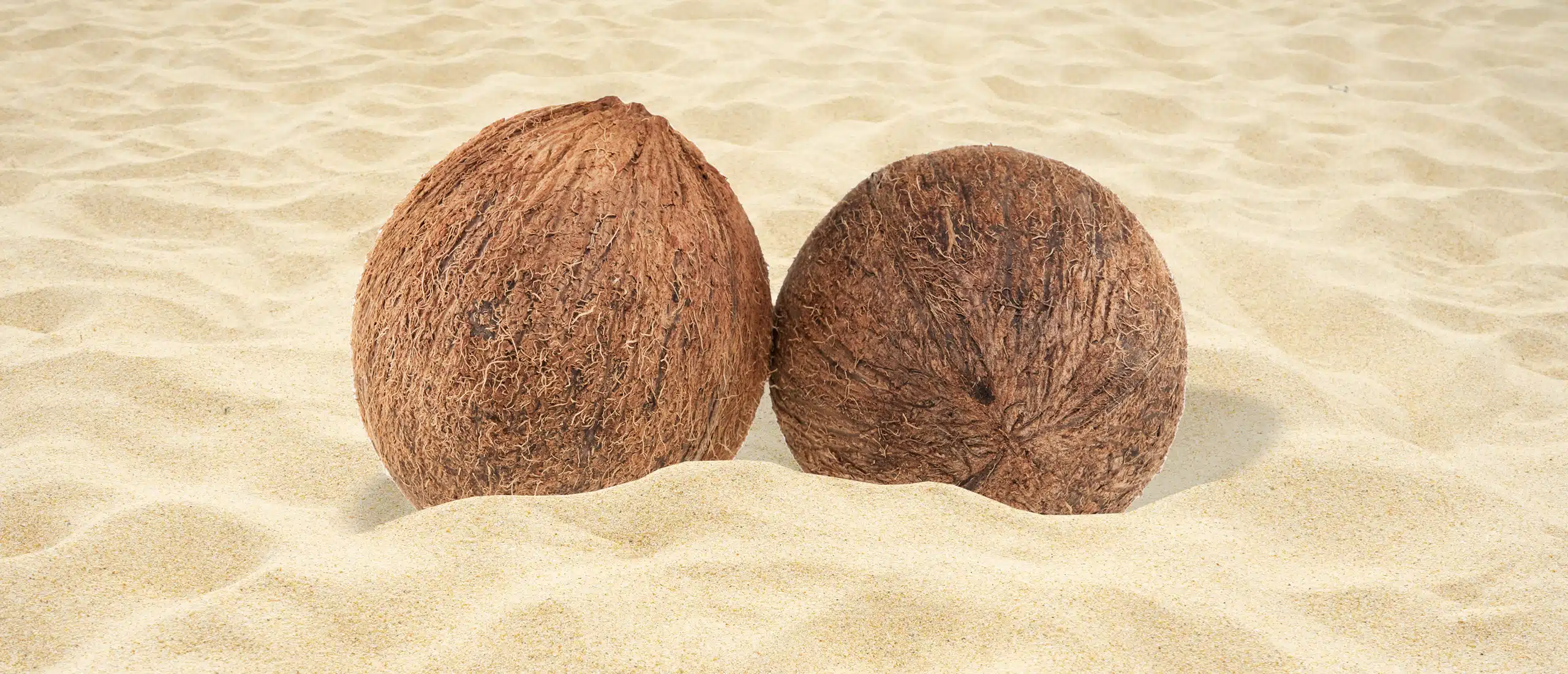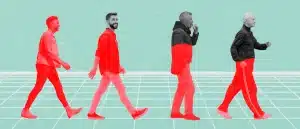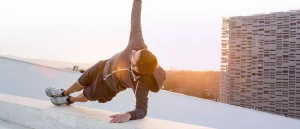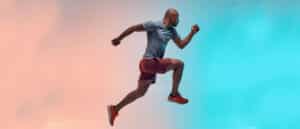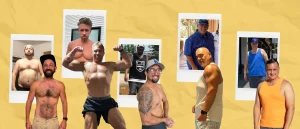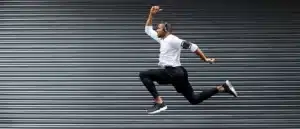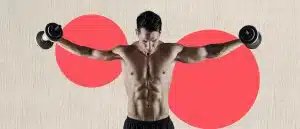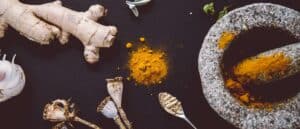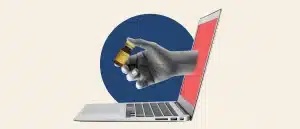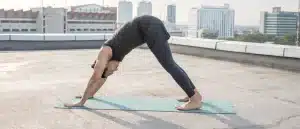Sorry, Shining a Red Light on Your Junk Won’t Boost T
- By Brian Good
- Fact-checked by Joy Ferguson
- April 12, 2023
Fast Facts
- Some people claim that red light therapy may help to boost testosterone levels.
- So far, that claim has not been proven by any large-scale medical studies.
- Effective ways to boost testosterone include diet changes, exercise, and medications including TRT.
Last year, Fox News lightning rod for controversy Tucker Carlson claimed that red light therapy—or “testicle tanning”—was the be-all and end-all solution for what he called the ongoing “total collapse of testosterone levels in American men.”
Carlson is right about the fact that T levels are declining at a precipitous rate. Testosterone naturally declines with age but a prominent 2007 study (1) found that a 65-year-old man in 1987 had about 17 percent more testosterone than a 65- year-old man in 2004. Tucker is also far from the first to dip his privates in the burgeoning right light biz. A whole network of dudes on Reddit have embraced this form of bromeopathy for years.
“I bought one of those NIR lights off Amazon and have been blasting my nuts with it,” wrote one enraptured user back in 2021.”
“I tried RLT last night for the first time. I sat under naked for 16 minutes. Woke up with a 🦴” claimed another.
Apparently, hundreds if not thousands of guys are sitting around shining red lights on their testicles, sometimes for hours at a time, in the hopes of increasing their T.
News flash: They’re wasting their time.
“The biological plausibility of this as an approach to treating testosterone deficiency is, in my view, extremely weak,” says John Amory, M.D., professor of medicine at the University of Washington. “In my 30-year career in men’s health, I have seen several of these ‘treatments’ for low testosterone come and go. Interest in these dies out after a few years when people realize they aren’t beneficial—and aren’t cheap.”
Which should make any sane man wonder, how’d we get to the point where testicle tanning was even considered to be a “legit” thing, let alone one being widely discussed on TV?
What is Red Light Therapy?
Red light therapy (also called low-level laser light therapy, soft laser therapy, and cold laser therapy) is an emerging treatment that claims to help with everything from reducing wrinkles and acne to improving wound healing.
Back in the early 1990s, NASA scientists who were conducting plant growth experiments, and spending time working with their hands under the lighting, found that abrasions on their hands seemed to heal faster than normal.
Since then, researchers have found some potentially promising benefits for red light on the cellular level, says Praveen R. Arany D.D.S., Ph.D., an associate professor at the University of Buffalo and expert on therapeutic uses of lasers and light treatments.
Cellular healing
Researchers have seen energy from red light absorbed by various targets such as tiny structures in our cells called mitochondria, notes Arany.
Once this light is absorbed, cells can become more energetic. This allows the cell to process oxygen more effectively, and this, in turn, makes the cell capable of performing better and healing more quickly.
Reduced inflammation
“Red light therapy has also been shown to affect receptors on cell membranes making them less sensitive. This insensitivity means cell membranes manage pain more effectively. It also makes them more capable of fighting off the effects of inflammation,” Arany said.
Cell regeneration
And finally, he added, red light therapy has been shown to help activate the production of growth factor TGF-beta 1, a protein that plays an important role in various cellular processes, including cell growth and regeneration.
Larger studies on the possible benefits of red light therapy are just now getting underway.
Can Red Light Therapy Boost Testosterone?
Despite the social hype, the answer is no—at least based on the research available now.
“There are scientific studies in lab animals showing increased testosterone levels after red light therapy treatments,” says Arany. “However, well-designed controlled human studies on the subject are still lacking.”
After looking into the science, Amory told us, “I haven’t been able to find any data from peer-reviewed studies on the benefits of red-light therapy with regards to male health or testosterone.”
“Some companies claim to have minimal, unblinded data on serum testosterone and testimonials from a few men,” he continues, “but that is not the kind of unbiased, blinded, placebo-controlled data that is useful for concluding anything about the intervention’s potential for benefit.”
Roots of the myth
The much-buzzed-about link between red light therapy and testosterone production probably stems from the belief that activating the mitochondria in our cells—and improving their energy metabolism—may possibly carry over to other parts of the body, says Amin Herati, M.D., an assistant professor of urology and ob/gyn and Director of Men’s Health and Male Infertility at The James Buchanan Brady Urological Institute in Baltimore.
“Since the testes are the primary producers of testosterone, improving the energy metabolism of the cells that produce testosterone (Leydig Cells) is thought to improve testosterone levels,” Herati told us. “
However, there is very little data to support the benefits or harm of this therapy in humans,” he says. “It’s not clear if it helps or not.”
How to Boost Testosterone
No matter how much red light therapy gizmos are hyped on Reels, Insta, and TikTok, they can’t boost T. But there are plenty of science-backed methods for increasing testosterone levels.
Keep your weight in check
Research in thousands of men shows a consistent link between obesity and low T (2). In one study, researchers found that obese men were more than eight times more likely to have low T than men who weren’t obese.
The association may be because fat tissue, especially when inflamed, expresses aromatase, an enzyme that converts testosterone into estrogen.
To trim excess pounds, start with the basics: limit foods that may cause you to gain weight and lower T levels (baked goods, sugar, processed carbs, trans fats, and alcohol.) Opt for complex carbs like whole grains and beans and natural foods instead. Aim for moderation, cutting where you can. Throw in some testosterone-boosting foods and you’re on your way to higher T levels.
Focus on fitness
Any regular movement may help with T production, but resistance training with free weights and high-intensity interval training (HIIT) remain the gold standard for naturally pushing testosterone to its max.
Free weights recruit more muscle mass as you train, causing a bigger and longer-lasting spike in testosterone post-workout. HIIT offers similar gains. Do both and you’re golden.
In one study, men aged 35 to 40 who completed three one-hour sessions of HIIT plus strength training weekly for eight weeks increased their T levels by a whopping 36.7% (3).
Consider TRT
If your levels of testosterone are clinically low, diet and lifestyle changes may not be enough to get them back to a healthy level for your age.
If you believe you may be dealing with the effects of low T, schedule an appointment with your healthcare provider (at-home tests are also an option). If he or she determines you need medication to treat low testosterone, there is an FDA-approved option available, testosterone replacement therapy (TRT). Clomid (clomiphene citrate), has also been prescribed off-label for many years to treat men with low T.
Hone’s at-home testosterone assessment is the simplest way to uncover whether your levels are low. If you qualify for treatment, TRT can be sent right to your door.
The Bottom Line
While the concept of red light therapy may hold promise in so many different health areas, too little is known about it now to consider it an adequate treatment for conditions like low testosterone—especially when we already have a wealth of available treatments that we know are proven to work. To boost lagging T, you’re better off making concrete diet and lifestyle changes and exploring options like medications and TRT with a trusted physician.
References
1. Thomas G. Travison, et al (2007). A Population-Level Decline in Serum Testosterone Levels in American Men,
2. Fui MN, et al (2014). Lowered testosterone in male obesity: mechanisms, morbidity and management.
3. Ambroży T, Rydzik Ł, et al (2021). The Effect of High-Intensity Interval Training Periods on Morning Serum Testosterone and Cortisol Levels and Physical Fitness in Men Aged 35–40 Years.



